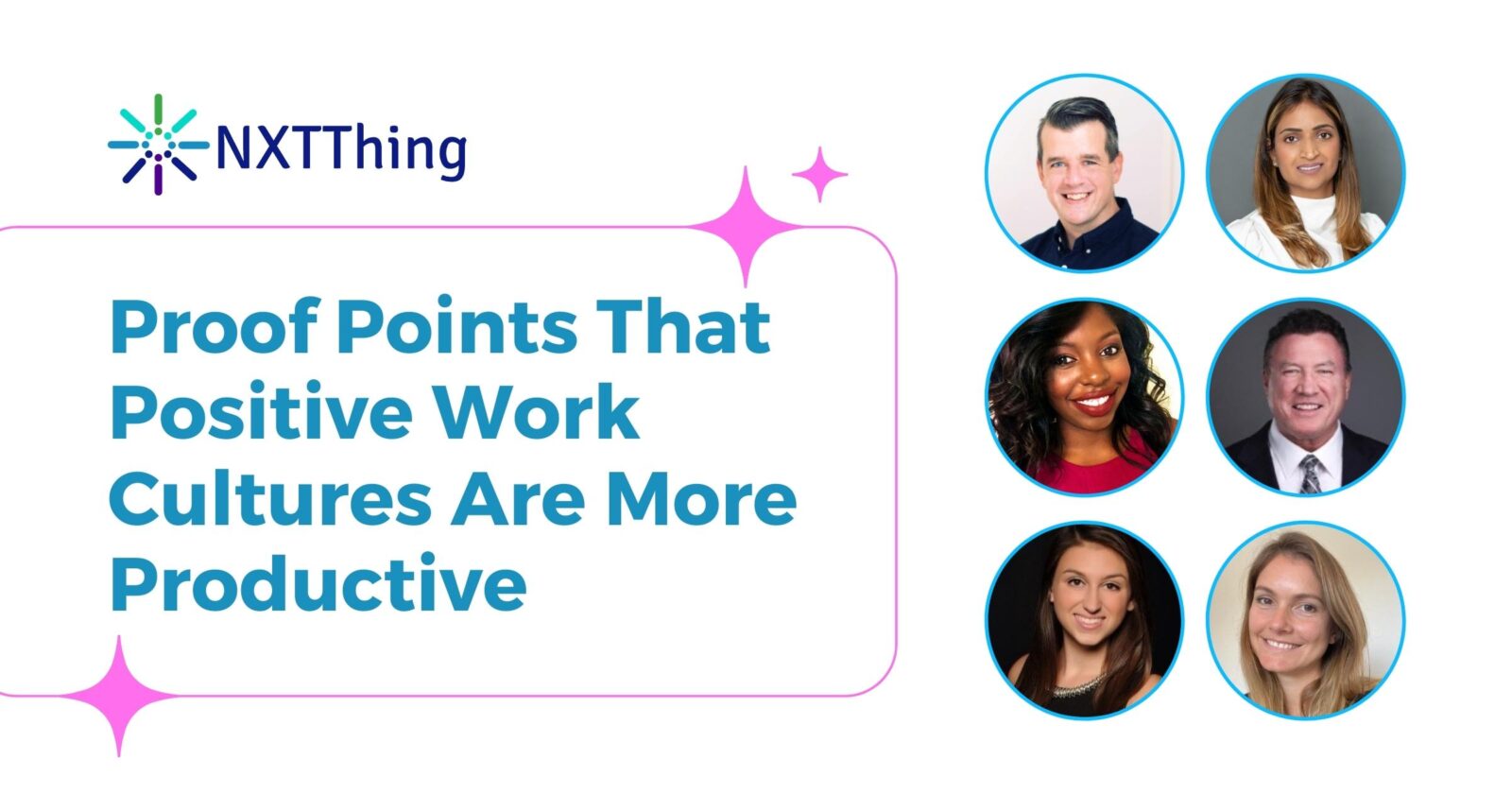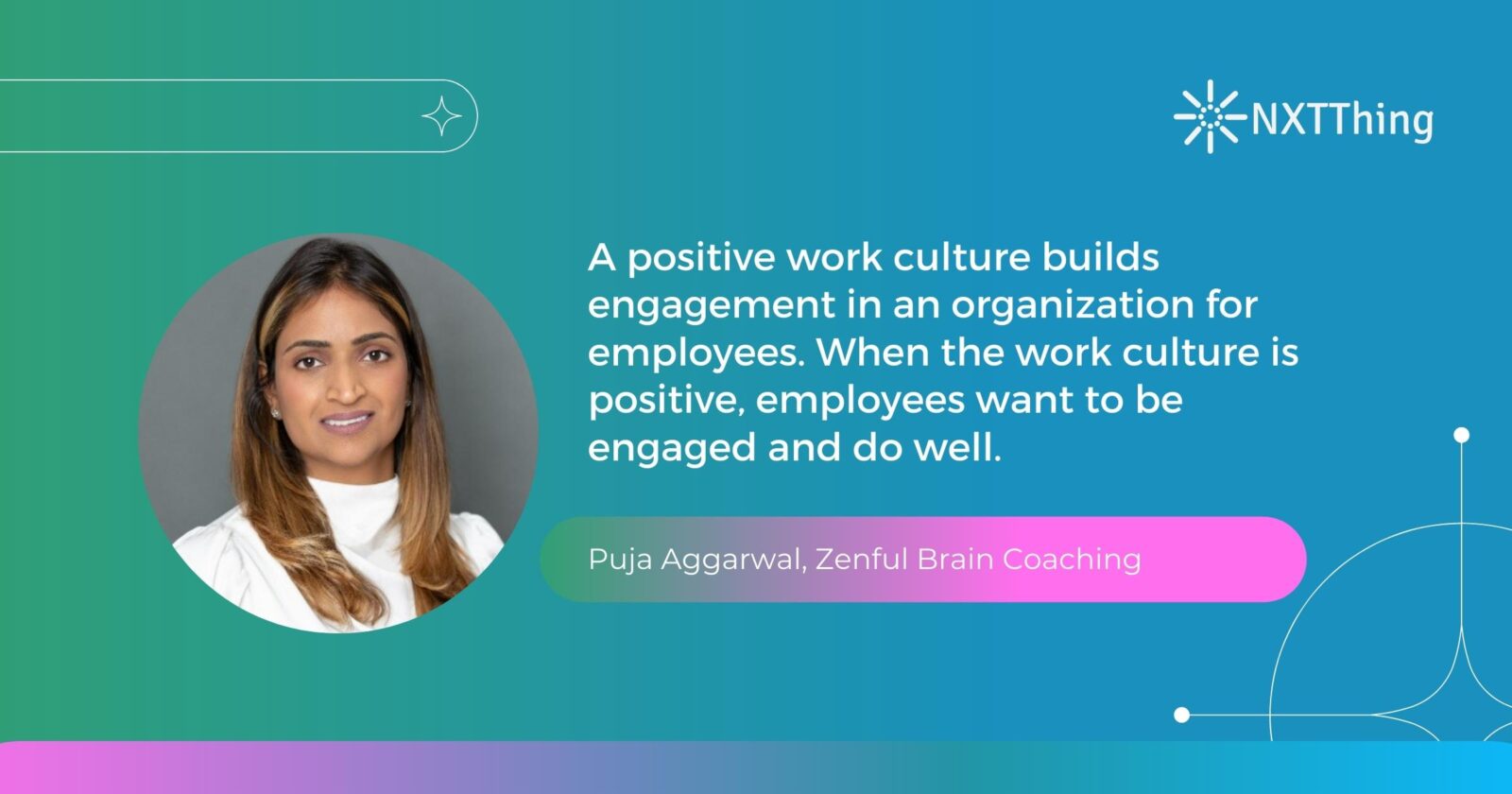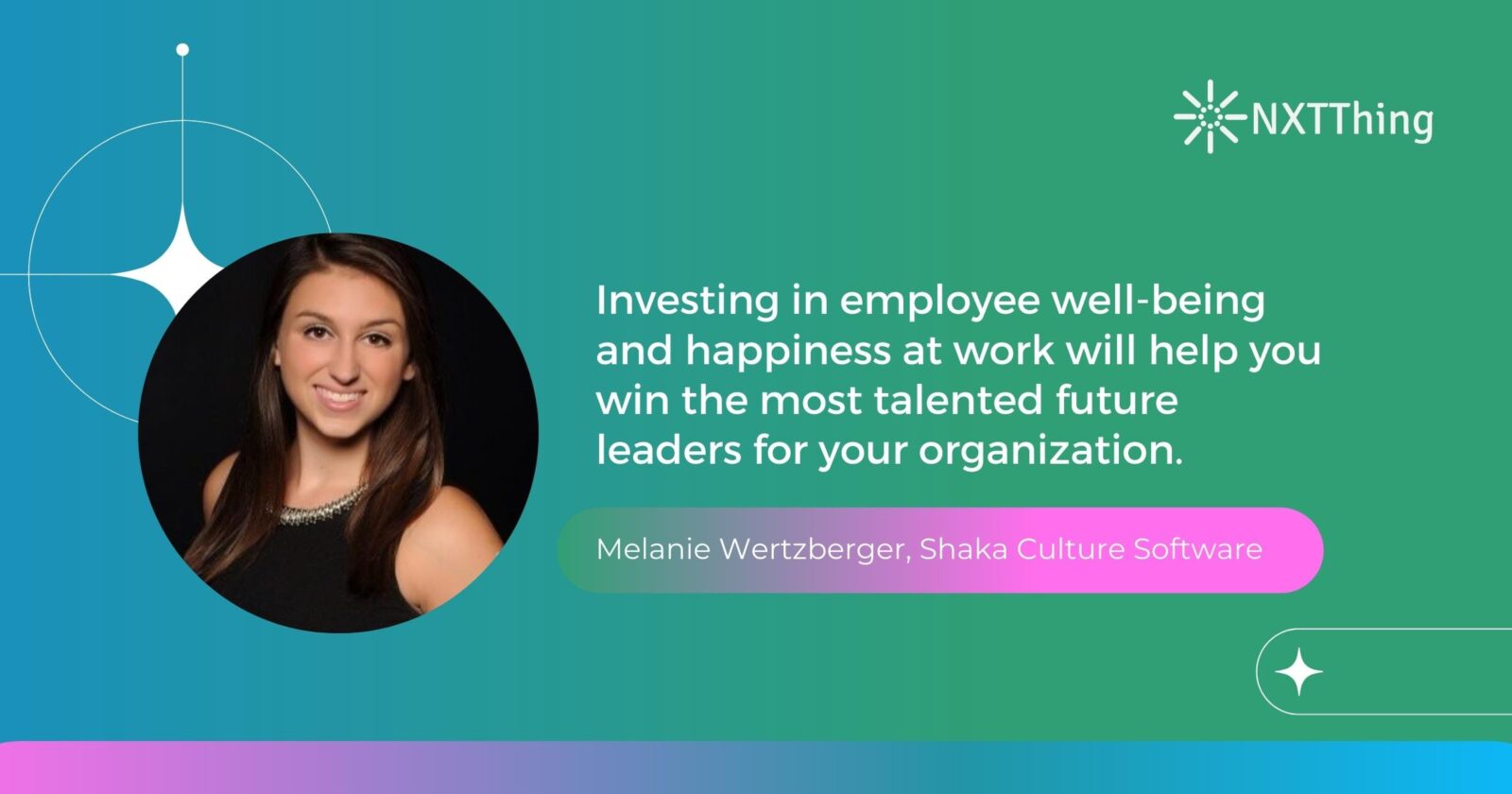Guest blog from Terkel.io
What proof points support the notion that positive work cultures are more productive?
To help understand whether a positive work culture is more productive for the workplace, we asked HR managers, CEOs, and business leaders this question for their insights. Several proof points are laid out based on their perspectives to show the various ways positive work cultures promote and sustain productivity in any work environment.

Here are 13 proof points these leaders present to show positive work cultures are more productive:
- Company Culture Got New Hires More Committed and Productive
- Employee Attendance Suffers In a Poor Work Culture Environment
- Positive Work Culture Increases Employee Engagement
- Supportive Work Culture Retains Employees
- Behavior Training Transfers into Measurable Gains
- Enforcing Non-Toxic Workplace Behavior Brings Growth
- Negative Attitude of Management Demotivates Team
- A Culture Centered on Employee Well-Being Encourages Employees to Persevere
- Employer Approachability Encourages Idea Generation and Sharing for Growth
- Caring for Employees Amounts to Caring for the Business
- A Diverse Workforce Is a More Productive Workforce
- Positive Work Culture Nurtures Young Talents for the Future of the Company
- Providing Equitable Opportunities Promotes Development
Company Culture Got New Hires More Committed and Productive
Working at a small business (an HR consulting firm) that is driven by our core values, we recognize that we may not be able to compete with the pay offered by bigger firms. But we leverage our culture to attract candidates who are looking to work for a culture-driven company. And through our recruitment process, we ascertain culture, and through behavioral interviewing. Ultimately, all our hires are willing to accept the financial reality of working for a small business because they recognize our benefits are more than just what they are paid every two weeks. They trust that we are being honest about our culture because of how we treat them through the interview process. And since we’ve screened candidates for the competencies we’re looking for — and how they will work with our core values in mind — we have a more committed and productive workforce. How we treated them during the interview matches how we treat them as an employee.
Eric Mochnacz, Senior HR Consultant, Red Clover
Employee Attendance Suffers in a Poor Work Culture Environment
A very simple statistic to showcase as a proof point is employee attendance records. When you have a positive work culture with an employee focus, you will have far fewer employees call out each week. Absences can add up for an organization and cause slowdowns and disruption of outputs. When your employees are happy and enjoy their work life, they are far less likely to be absent from work. It’s a very easy metric to monitor and measure against.
Mark Smith, Program Chair, University of Advancing Technology
Positive Work Culture Increases Employee Engagement
A positive work culture builds engagement in an organization for employees. When the work culture is positive, employees want to be engaged and do well. With a toxic work culture, there is a higher rate of disengaged workers leading to higher absenteeism, more errors, and defects. With a higher rate of disengagement, there is decreased productivity and profitability. A positive work culture reinforces engagement and community in an organization building a network of support.
Puja Aggarwal, Neurologist/Neuroscientist, Zenful Brain Coaching

Supportive Work Culture Retains Employees
One of the primary reasons that employees give for quitting a job is toxic work culture. Cultivating a culture that is not just non-toxic, but which actually supports employee development is critical to retaining your best people. That’s especially true in the current job market.
The most important characteristic of a supportive work culture is psychological safety. Employees do their best work, give the most and stay the longest when they feel safe. That means they are safe to ask questions, offer input, and disagree with their peers, manager, or leadership team. Great cultures don’t happen automatically. They require attention. So, begin assessing your own organization’s culture. You can only make it awesome if you are willing to discover where it is lacking.
Amie Devero, President, Beyond Better Strategy and Coaching
Behavior Training Transfers into Measurable Gains
Behavior training transference is measurable in the organization’s bottom line as cost savings or productivity improvements — often both. Behavior training, however, isn’t something that you simply throw at the wall to see if it will stick. First, there is the training and then practicing what was learned, so that learners transcend the learning curve without embarrassment or feeling vulnerable.
In one of our case studies, a Leadership communications practice component was tracked and measured by HR, Finance and Operations. There were predictable HR improvements found in less overtime, less sick time, and fewer scheduling problems. In Operations, however, the savings and productivity improvements were found in risk management. It seems that when leadership behavior and communications with employees improve, there are fewer accidents. You can’t track improvement unless you measure it.
Dianne Crampton, President, TIGERS Success Series
Enforcing Non-Toxic Workplace Behavior Brings Growth
During the interview process, and in quarterly staff meetings, I reiterate that gossip at our firm will not be tolerated. I have warned folks that even the most skilled employees will be let go if they cannot control a tendency to gossip. Our management staff makes it clear that we are a professional organization and the folks we hire/retain expect an office culture that is focused on the important services we provide and that culture is one of the benefits of our work environment.
Roger Coventry, Managing Member / Partner, Childers & Coventry, LLC
Negative Attitude of Management Demotivates Team
Fostering a positive work culture absolutely increases productivity. Years ago, I placed a qualified candidate at a big-name company, and to our disappointment, she floundered. At first, I wondered if she was going through something personal, but after a workplace visit, the problem became clear. Management was a nest of negativity that seeped downwards, demotivating the entire team. Thankfully, a few months into her position, there was a massive turnover in the C-suite, and a change in culture immediately followed. Suddenly, she was back to her old productive self — and it wasn’t just her. The financials of the company began improving as well: tangible proof that positive work cultures are more productive.
Linn Atiyeh, CEO, Bemana
A Culture Centered on Employee Well-Being Encourages Employees to Persevere
When there’s a positive work culture, employees are generally more understanding and are willing to ride through the ebbs and flows of a business. This is due to the fact that you cannot purchase or buy a positive work culture, while competitors may offer more, it’s what they cannot buy that becomes more important to the employee. While a higher salary and perks might be nice to have, right now a must-have for many employees is security, and that’s not just financially; it’s mentally as well. When there’s a positive work culture, employees are willing to find innovative solutions, stay longer in their positions, recruit people inside the org and seek internal mobility.
Morgan Williams, Head of People & Culture, The Newsette
Employer Approachability Encourages Idea Generation and Sharing for Growth
When employers invest the time in getting to know new hires in a genuine way, not superficial and not as they appear on paper, they are adding a personality with thoughts and perspectives to the team. Employer approachability encourages conversation, which is how ideas are made, perspectives are respected and cultures get created.
A key component to a successful conversation isn’t just the talking part, it’s the listening part. Listen, really listening to others, is what unlocks good communication. When the flow of communication is open, receptive, and honest, good habits are made. These habits enhance the workplace culture. Look at all of this talk about quiet quitting. This is proof that employees are talking and employers are listening. Or worse, it’s proof that the conversation never happened. Conversation sparks connection.
Janine Sunday, CORE Certified Master Coach/Communication Consultant, Lean Into Change
Caring for Employees Amounts to Caring for the Business
Organizations that are able to hack the intersection between employee and business interests will win in the future of work and the future marketplace. Research continues to prove that positive and culture-conscious cultures that commit to people have a direct relationship with shareholder returns and outperform their competition (Gallup, et al). Companies that can proactively operationalize their culture and employee experience are achieving higher profitability, higher productivity, higher customer ratings, lower turnover, and lower quality defects.
In the reverse, we are seeing a movement of attrition with organizations that continue to turn a blind eye to unhealthy, ineffective, and toxic cultures and leadership. According to a recent MIT Sloan Management Review study (2022), a toxic culture is now one of the strongest predictors of industry-adjusted attrition and is 10 times more important than compensation in predicting turnover.
Angela Howard, Organizational Psychologist & Culture Impact Strategist, Angela R. Howard Consulting
A Diverse Workforce is a More Productive Workforce
It’s known that a diverse workforce is a more productive workforce, so it has become a strategic priority for many companies. Gender, age, race, disabilities, background, careers, and many other characteristics that make people “unique”, are in fact, the ones that make us turn more inclusive with one another. Inclusive teams are more engaged because they feel safer speaking up, sharing their ideas, working together to solve problems, and using everyone’s abilities to make better decisions. The points of view, backgrounds, and experiences people bring to the workplace are valued by their coworkers.
When people feel valued, respected, and trusted, they feel safe, and that makes attrition significantly lower. Diversity is at the bottom. We can’t expect people to include everyone and value differences if we don’t have those differences in our workforce, so measuring diversity and promoting it, creating a talent attraction, recruitment, and retention strategy is the base of productivity.
Javiera Lyon, Chief People Officer, SimpliRoute
Positive Work Culture Nurtures Young Talents for the Future of the Company
The ability to win the most promising young talent drives an organization’s productivity, innovation, and long-term success. The competition is fierce with most technology companies being able to offer amazing flexibility and competitive salaries. These young employees do indeed see beyond salary; culture matters to them.
Our research on Generation Z has found that 87% of Gen Z Employees want to work for a company that values their physical and mental well-being. Additionally, 94% say it is important to them that they build friendships at their workplace. Investing in employee well-being and happiness at work will help you win the most talented future leaders for your organization.
Melanie Wertzberger, CEO, Shaka Culture Software

Providing Equitable Opportunities Promotes Development
A positive work culture means different things to different people. Some would describe a positive work culture as a place where they can complete projects and tasks without any thought of conflicts and concerns about workspace culture issues often faced by racialized groups and communities.
For racialized groups and communities, being authentic and productive in the workspace means having access to the same tools and opportunities for development and contributing to success, opportunities for building expertise, and using their expertise to contribute to workspace objectives and strategies. To prove themselves, these people often have to leave problematic workspace cultures behind. This often requires leaving organizations to create other opportunities to highlight their potential. This results in lost expertise to the current organization and to organizations that do not provide equitable opportunities for all.
Ingrid Wilson, Senior Director, Culture, Diversity, Equity and Inclusion, Walmart Canada

Terkel creates community-driven content featuring expert insights. Sign up at terkel.io to answer questions and get published.





